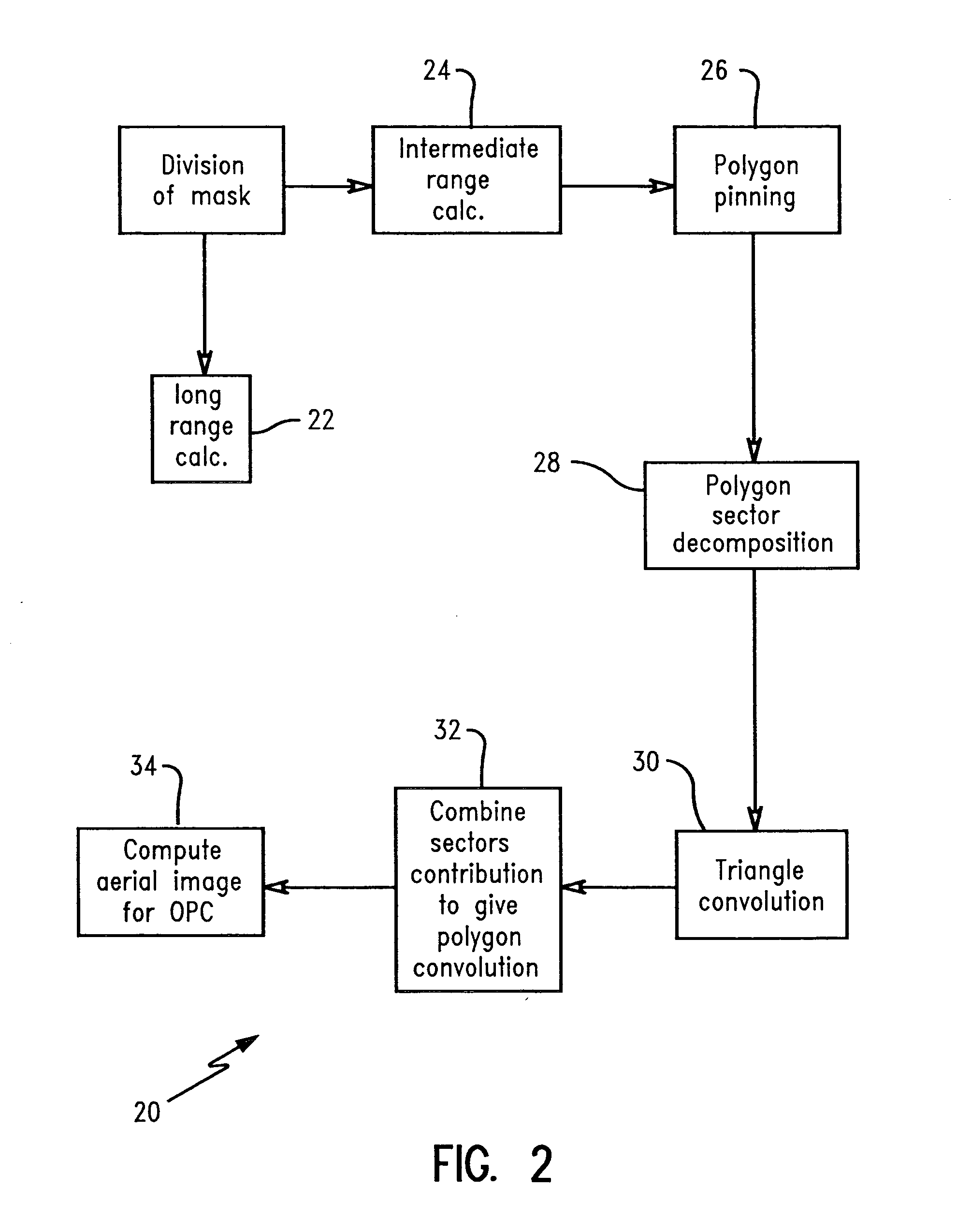Extending the range of lithographic simulation integrals
a simulation integral and integral technology, applied in the field of optical microlithography, can solve the problems of reducing the range of lithographic simulation integrals, and ignoring the majority of scattered ligh
- Summary
- Abstract
- Description
- Claims
- Application Information
AI Technical Summary
Benefits of technology
Problems solved by technology
Method used
Image
Examples
case 3
(case 3) as shown in FIG. 6, the triangle integral is given by L″(h,θ)=0, since the whole triangle is inside the hole of the kernel.
Rules for Sector Convolution
[0089] The polygon convolution method involves the calculation of the contribution from two triangles per vertex as previously mentioned and illustrated in FIG. 3. The triangle contributions give the net of the contribution of the polygon after summation through all vertices. Since the polygon can be of arbitrary shape and the observation point xo can be inside or outside the polygon, a rule for the sign of the contribution of each triangle is required. In most cases, lithographic mask patterns contain polygons formed by horizontal, vertical, and 45-degree line segments only. Therefore, an algorithm must handle 45-degree sectors in addition to 90-degree sectors. This makes for 96 possible types of sectors that may exist in any polygon. By taking into account the symmetry between the clockwise and counterclockwise vertex tra...
PUM
 Login to View More
Login to View More Abstract
Description
Claims
Application Information
 Login to View More
Login to View More - R&D
- Intellectual Property
- Life Sciences
- Materials
- Tech Scout
- Unparalleled Data Quality
- Higher Quality Content
- 60% Fewer Hallucinations
Browse by: Latest US Patents, China's latest patents, Technical Efficacy Thesaurus, Application Domain, Technology Topic, Popular Technical Reports.
© 2025 PatSnap. All rights reserved.Legal|Privacy policy|Modern Slavery Act Transparency Statement|Sitemap|About US| Contact US: help@patsnap.com



